Machu Picchu
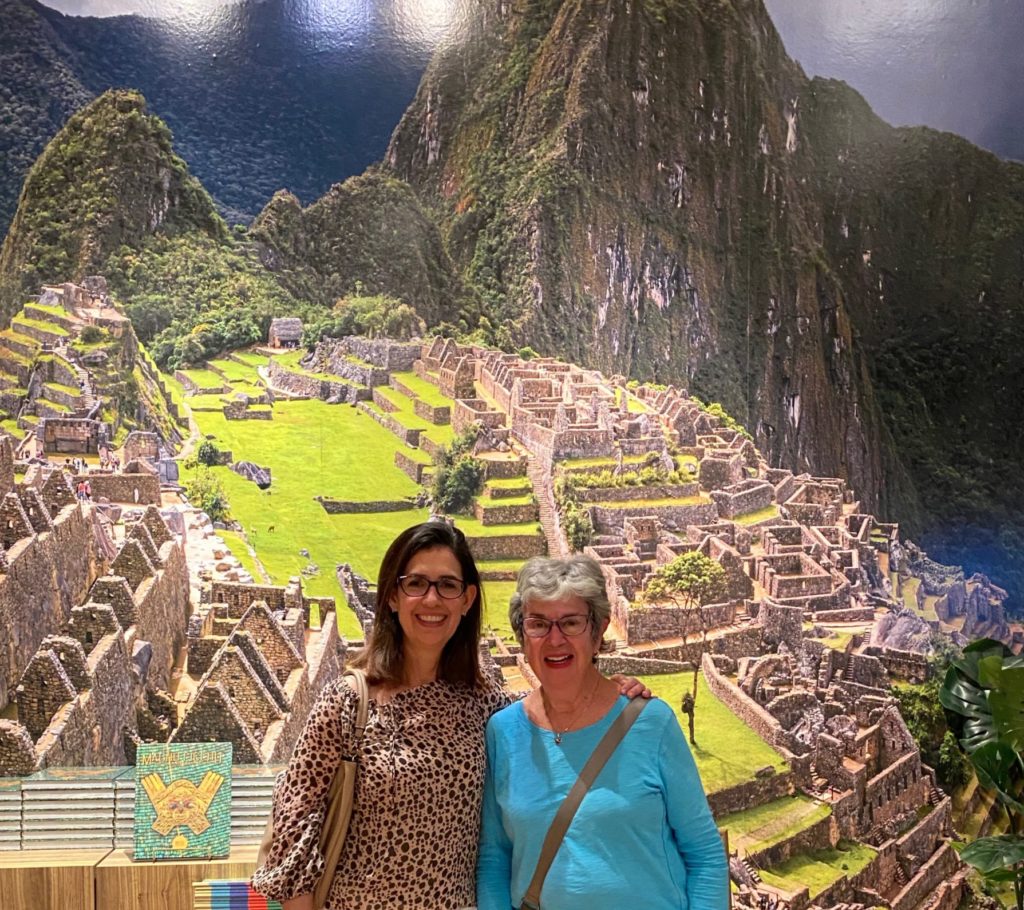 Machu Picchu and the Golden Empires of Peru, a special exhibition at the Boca Raton Museum of Art, offered me a view of a World Heritage Site I’ve always wanted to visit. In January this exhibit allowed me to travel there virtually with my friend Marjo. In 1993, she had spent the night in a small posada at Machu Picchu with her late husband Van. That night they were awakened by a dramatic thunderstorm. According to Van, “the Gods were showing their eternal power.” The next morning Machu Picchu was magically quiet; daytime trippers arrived later in the day. Our visit to the exhibition was magical, too. So in February I returned with Nina and Elizabeth and two weeks later, with Lilli and Violet. On that final visit we stood in line 45 minutes to experience the Virtual Reality option previewed at the end of this post. We loved the feeling of almost being there!
Machu Picchu and the Golden Empires of Peru, a special exhibition at the Boca Raton Museum of Art, offered me a view of a World Heritage Site I’ve always wanted to visit. In January this exhibit allowed me to travel there virtually with my friend Marjo. In 1993, she had spent the night in a small posada at Machu Picchu with her late husband Van. That night they were awakened by a dramatic thunderstorm. According to Van, “the Gods were showing their eternal power.” The next morning Machu Picchu was magically quiet; daytime trippers arrived later in the day. Our visit to the exhibition was magical, too. So in February I returned with Nina and Elizabeth and two weeks later, with Lilli and Violet. On that final visit we stood in line 45 minutes to experience the Virtual Reality option previewed at the end of this post. We loved the feeling of almost being there!
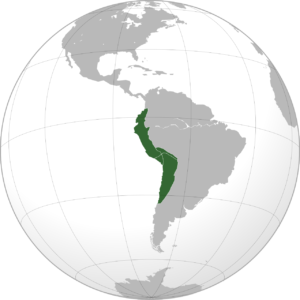 The exhibit revealed how much I have to learn about Andean civilizations, which archaeologists believe first developed on the narrow coastal plain of the Pacific Ocean and extended from southern Colombia southward down the Andes to Chile and northwest Argentina. The Norte Chico civilization of Peru is the oldest known civilization in the Americas, dating back to 3200 BCE. The exhibit had relics from the Cupisnique Culture (1250 – 100 BCE); the Moche (100-800 CE); the Chimu (1100 – 1470 CE), and finally, the Incas.
The exhibit revealed how much I have to learn about Andean civilizations, which archaeologists believe first developed on the narrow coastal plain of the Pacific Ocean and extended from southern Colombia southward down the Andes to Chile and northwest Argentina. The Norte Chico civilization of Peru is the oldest known civilization in the Americas, dating back to 3200 BCE. The exhibit had relics from the Cupisnique Culture (1250 – 100 BCE); the Moche (100-800 CE); the Chimu (1100 – 1470 CE), and finally, the Incas.
Of the many heroes depicted in they exhibition, it was Ai Aipaec, a Moche, whom I found most intriguing. He is the central figure in this mural, with his head bowed to a god with a spear. A video animating the mural showed how Andeans transformed what they observed about climate cycles into a story about Ai Aipaec’s death and subsequent rebirth. Honoring him and his sacrifice, they believed, helped keep their crops watered. 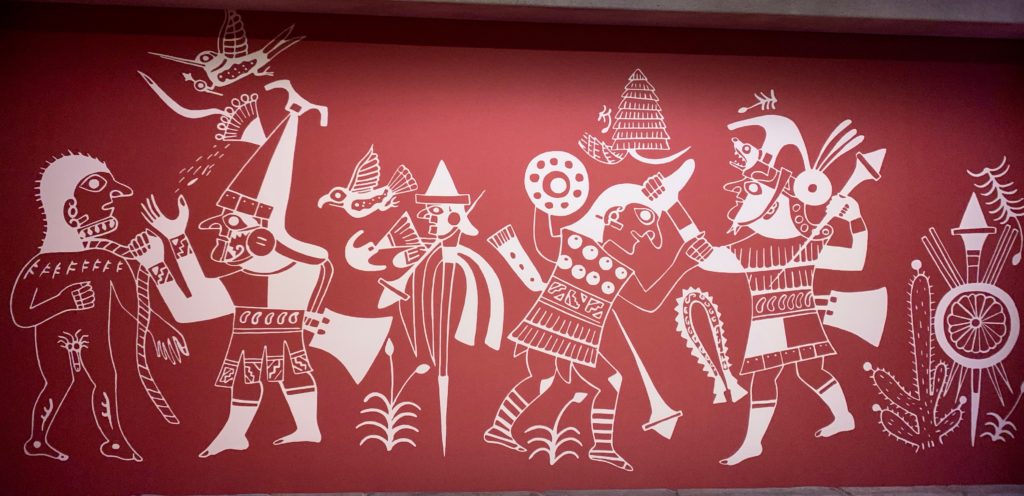
![]()
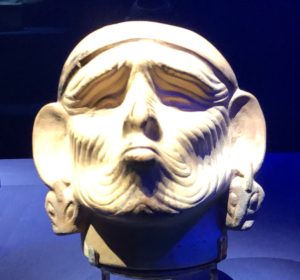 Offering one’s life was the most noble communal act–it assured the return of the natural cycles and life for the whole community. This sculpture shows an exhausted Ai Aipaec. His face is wrinkled and tired; he’s become an old man. The Owl Crown is gone, but with his snakehead ear ornaments intact, he can enter the Underworld. Ai Aipaec has been resurrected as a Marvel comics’ Spiderman, with the torso of a human male (snakes for hair and large fangs) and the lower body of an enormous spider.
Offering one’s life was the most noble communal act–it assured the return of the natural cycles and life for the whole community. This sculpture shows an exhausted Ai Aipaec. His face is wrinkled and tired; he’s become an old man. The Owl Crown is gone, but with his snakehead ear ornaments intact, he can enter the Underworld. Ai Aipaec has been resurrected as a Marvel comics’ Spiderman, with the torso of a human male (snakes for hair and large fangs) and the lower body of an enormous spider.
Ceramic artifacts revealed how artisans depicted the opposite forces animating the world: male/female, night/day, Sun/Moon, life/death, wet and dry seasons. Reconcyling opposites made them whole and created life, order, and the continuity of natural cycles.
Spiral designs on pots represented the cycles of nature, expressing the possibility of a new beginning. Spirals also symbolized the movement of water. These funerary objects held liquids. Through rituals all liquids, water, or sacrificial blood became camaquen, the vital force that animates everything in the Andean world.
Machu Picchu was constructed as an estate for the Inca emperor Pachacuti (1438–1472). Often mistakenly referred to as the “Lost City of the Incas”, it is the most familiar icon of Inca civilization. The Incas built the estate around 1450 but abandoned it a century later, at the time of the Spanish conquest. The gold in this exhibition was even more captivating than the ceramic artifacts. It appealed to the Spanish Conquistadors, too. At the time of the Spanish Conquest, which began in 1532, the Inca Empire was vast, stretching for thousands of miles across the Andes with a population of 12 million people from many ethnic groups. After the Spanish conquest, the Inca Empire unraveled.
Machu Picchu was abandoned and left to Nature. On July 24, 1911, a Yale University history lecturer named Hiram Bingham III climbed to the top of that mountain ridge and encountered one of the most extraordinary sets of ruins on Earth: Machu Picchu. The Museum website offers a vivid description:
Nestled in a cloud forest, this great Inca Empire’s enduring symbol of architectural prowess is protected by twin sacred mountains and is invisible from below. Further adding to its unrivaled beauty, the flourishing landscape of Machu Picchu has restored much of the original biodiversity that it enjoyed in Incan times through a recent reforestation initiative. In this dramatically staged expedition, the sounds of roaring jaguars, screaming macaws, and torrential rainfall are all around you as you unravel the mysteries of Andean cosmology and marvel at the sophistication of Andean artists.
The Virtual Reality upgrade gave us 15 minutes of exploring the wonders of Machu Picchu with a facsimile of its founder, the Inca emperor Pachacuti. Guided by a condor, we flew from the Temple of the Sun, past the Three Window house, to the heights of Huayna Picchu. Cinematic motion chairs brought brought the experience to life, complete with a thunderstorm and an earthquake. Travel was never so easy; history rarely such fun! Thank you Boca Museum!
Update on April 2, 2022: Leslie, my daughter-in-law, shared with me this picture of her sister Cindy and Kristian becoming engaged at Machu Picchu. Kristian’s father Lucho was born in Peru. They are now parents of Quinn Gomez, born March 18, 2020.
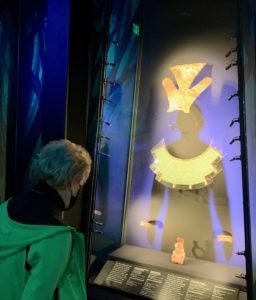
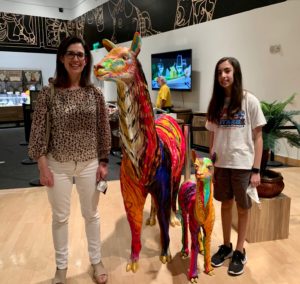
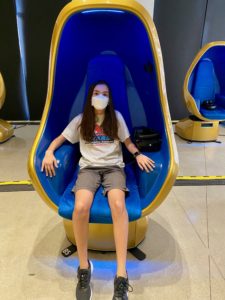
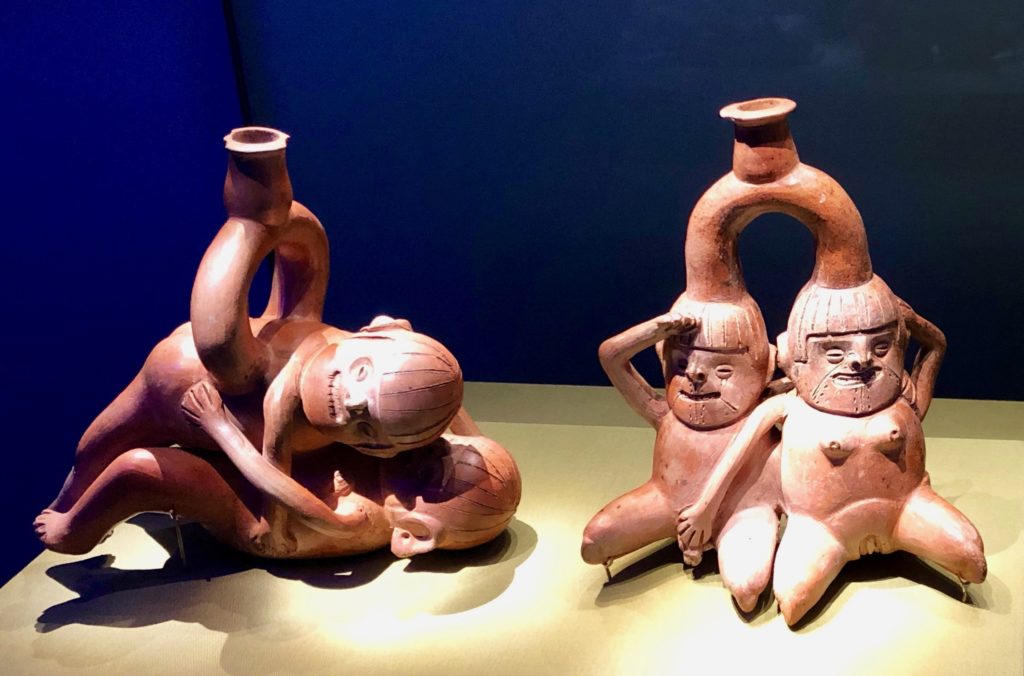
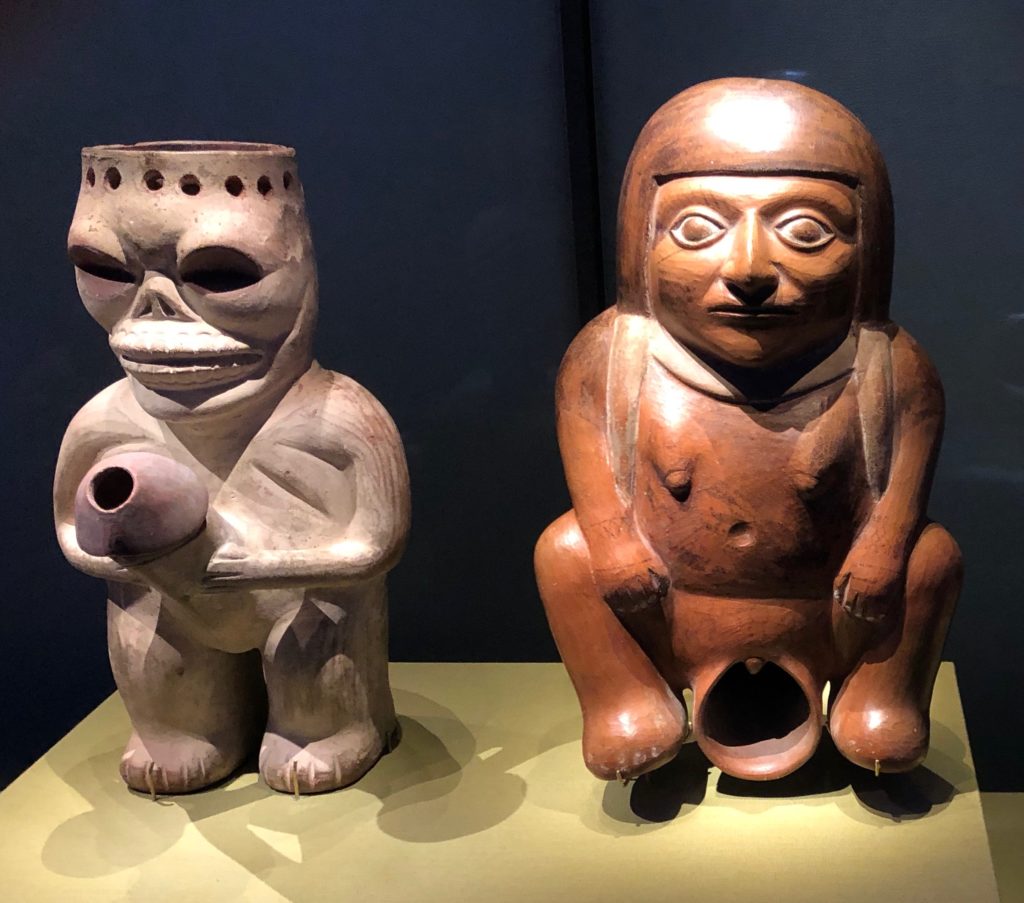
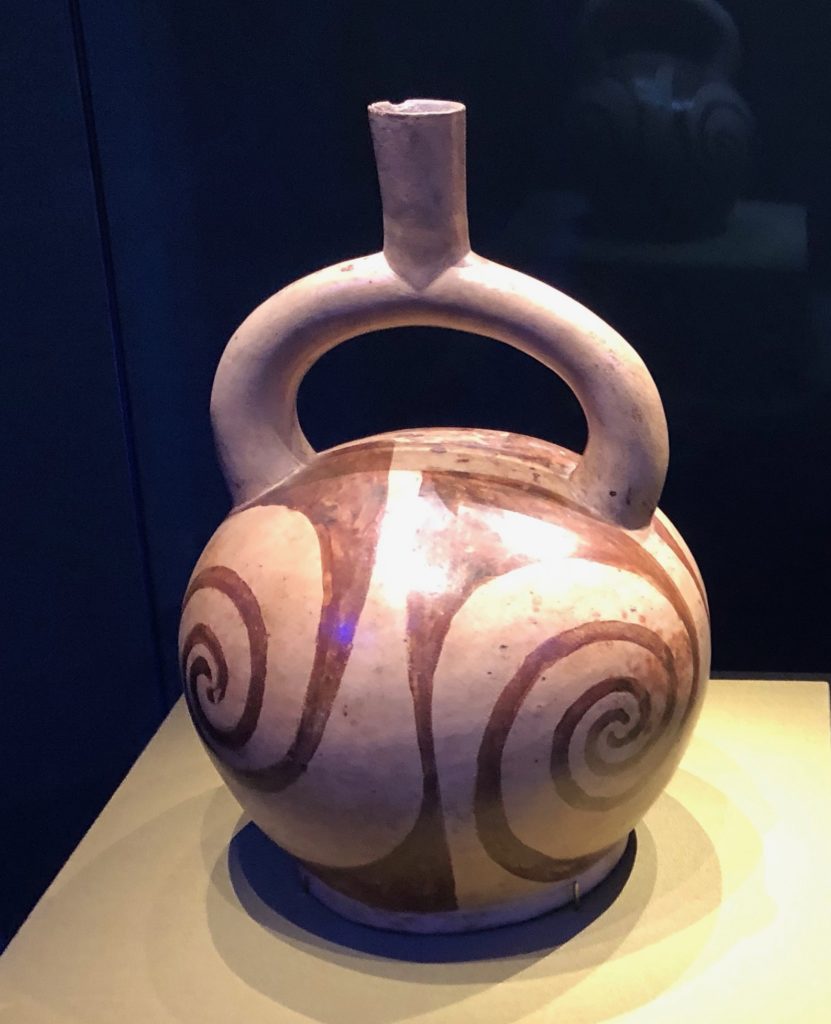
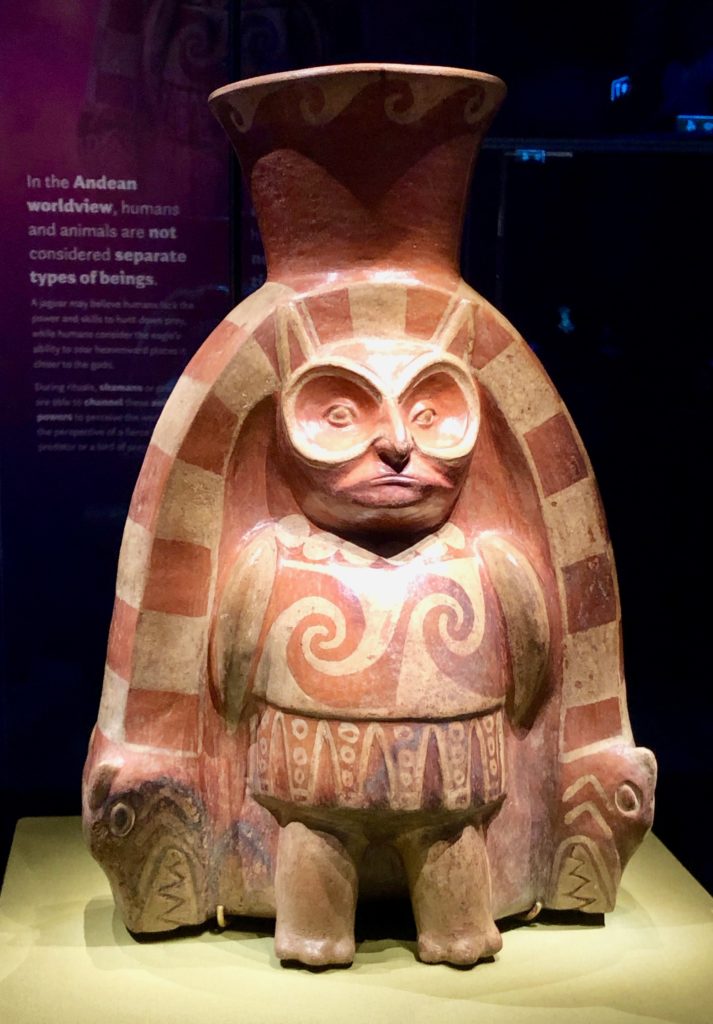
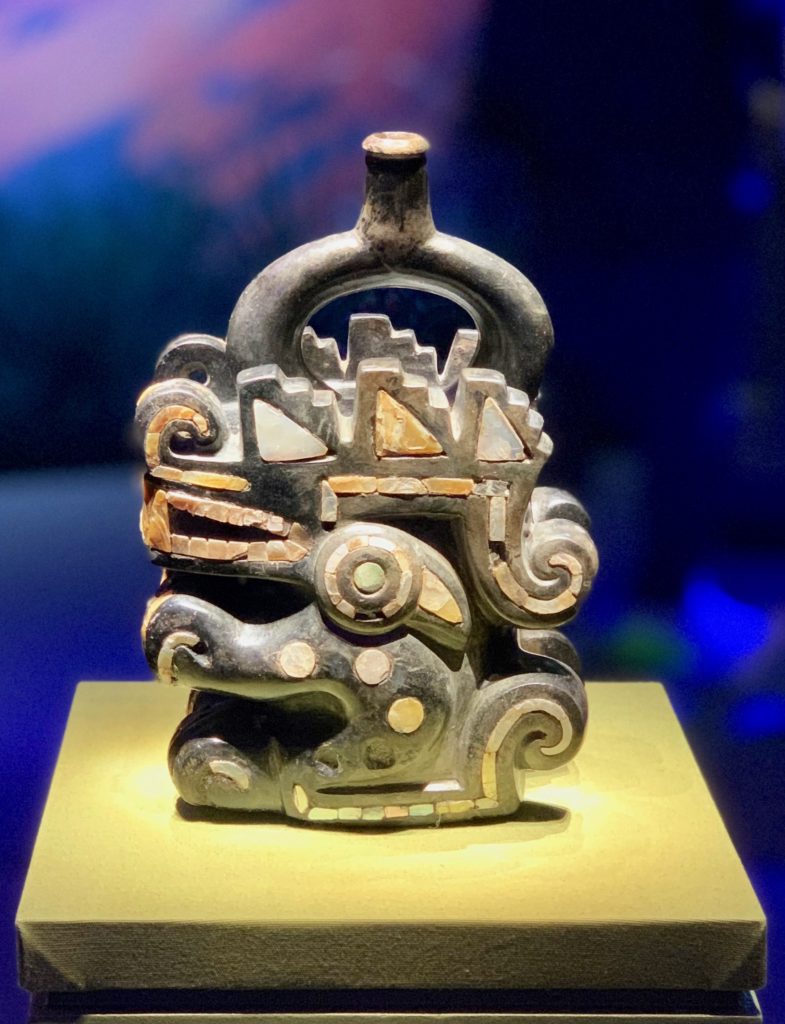
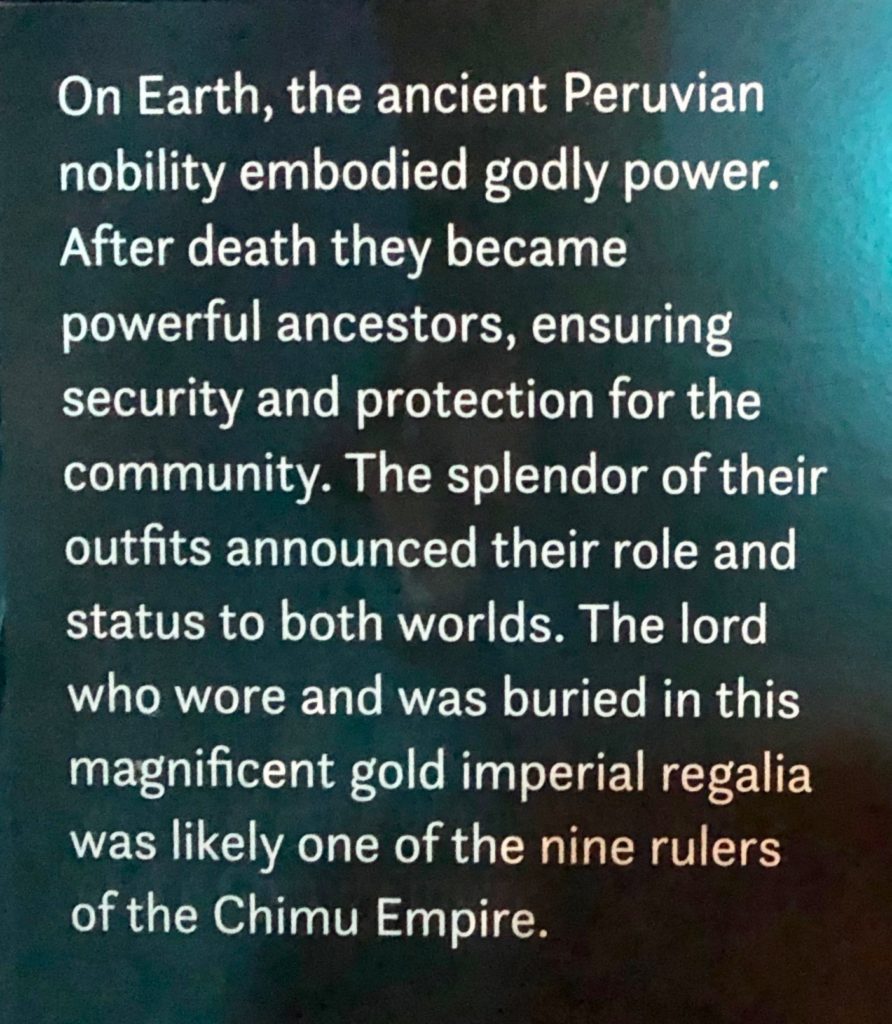
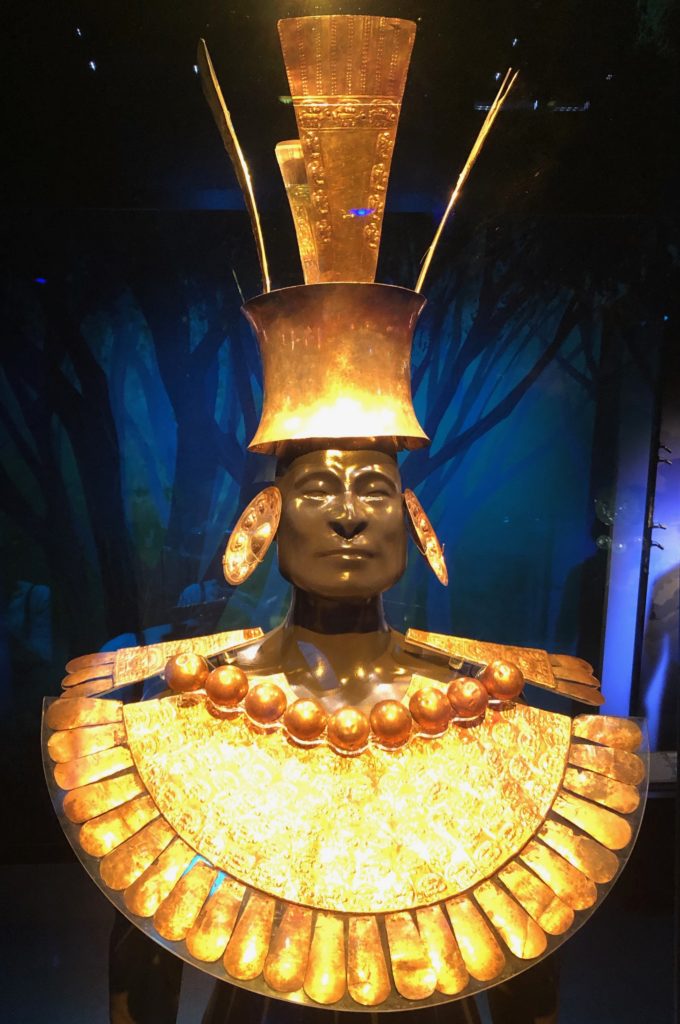
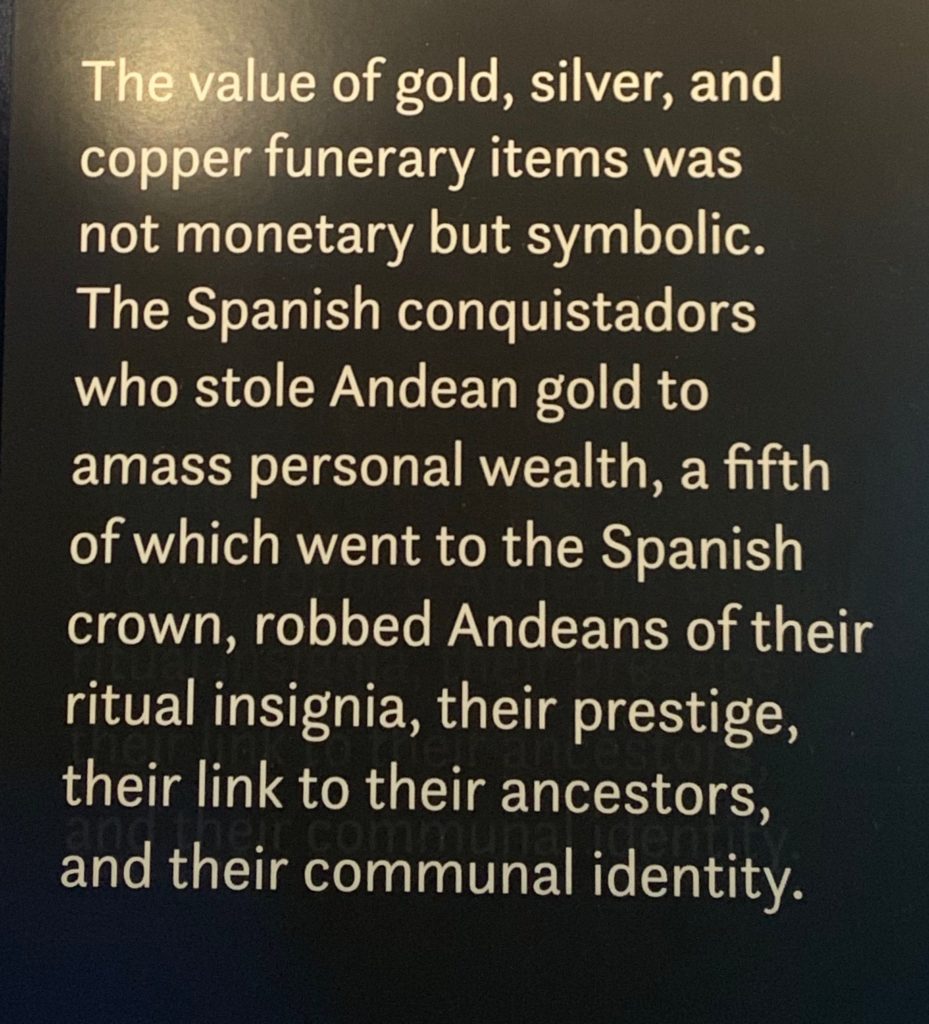
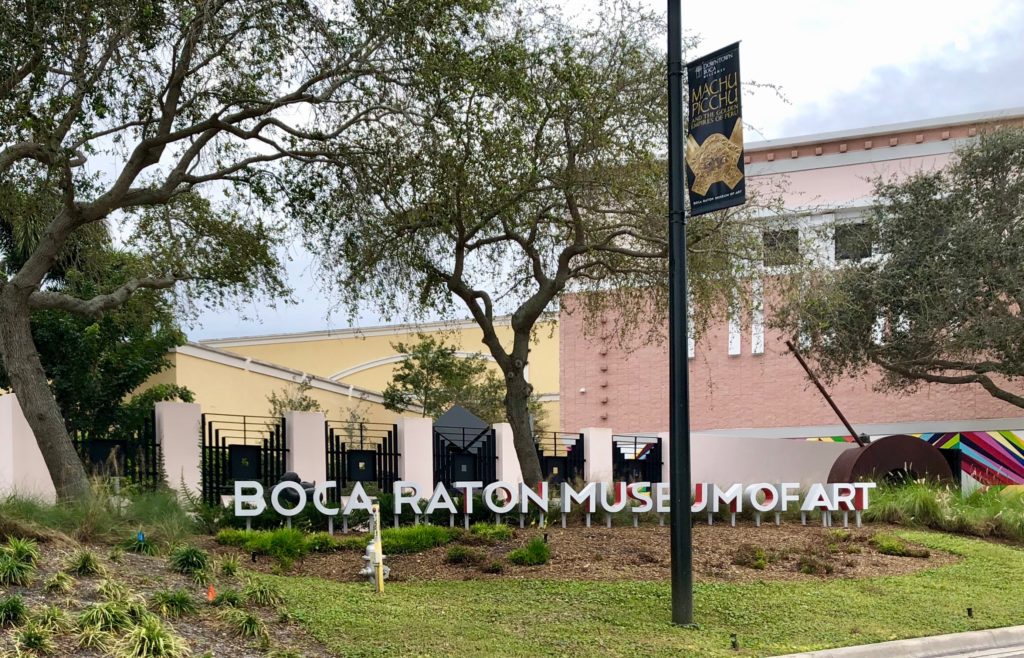
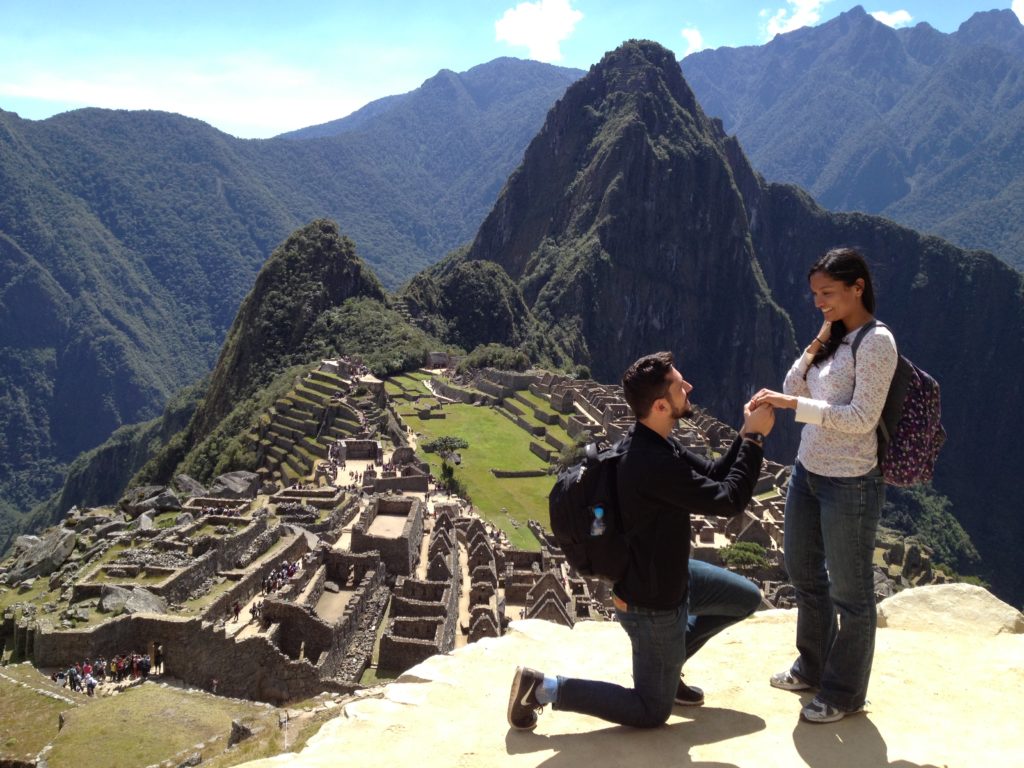
Leave a Reply